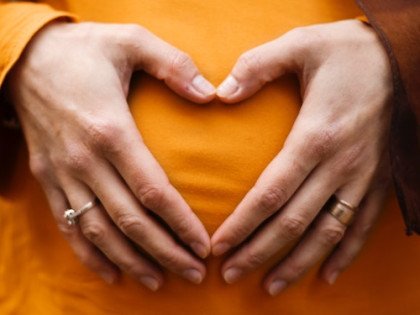The research looked at just over two thousand students who self-reported their recollection of secondhand vape exposure from 2014 (from when they were 8yrs old at most). It also asked them to recall any wheezing or self-diagnosed “bronchitic symptoms”.
They concluded: “Secondhand nicotine vape exposure was associated with increased risk of bronchitic symptoms and shortness of breath among young adults.”
True to form for negative studies involving Jessica Barrington-Trimis, press releases were issued to media outlets so they could swiftly type up bias coverage, saying: “prohibiting e-cigarette use in public places is warranted, just as secondhand tobacco smoke exposure has been prohibited in public spaces for decades.”
The American Council on Science and Health provided a withering response: “A careful reading of the paper indicates that this is little more than wishful thinking. The possibility that vaping has serious secondhand effects is speculative at best and offers little justification for restricting vaping in public places.”
It continued: “Exactly how do you determine if someone's respiratory symptoms were due to secondhand vaping without knowing how much nicotine vapor or cannabis smoke they were exposed to, or how often they were exposed? Asking them if anyone in their household vapes or uses cannabis tells you next to nothing.
“The researchers were entirely dependent on high-school students to accurately report their exposure to nicotine vapor, tobacco, and cannabis, as well as their related health outcomes at each wave. Recalling what my friends and I were like at 17, that sounds like a fool's errand—as does using a study like this to guide public policy.”
The criticism didn’t end there.
Providing an expert response, Professor Lion Shahab, Professor of Health Psychology and Co-Director of the UCL Tobacco and Alcohol Research Group, University College London, said: “First, as a purely observational study, these findings cannot establish a causal association. There may be other important confounders that may have contributed to these results. For instance, the measure of exposure was limited to the household of young adults and did not include exposure that may occur outside the household, neither did the study control for the type of housing or measure socioeconomic position. Because young adults were not randomly selected and essentially self-selected into different exposure groups, these factors may have contributed to differential respiratory symptoms.”
Professor Shahab also pointed out that Barrington-Trimis’ team didn’t bother to consider if any of the students had actually vaped, smoked or used other products other than in the 30 days prior to being interviewed. No measurements were taken, no claims validated
“The vast majority of participants with secondhand nicotine vape exposure (up to 93.1%) also reported either past 30-day personal use of tobacco or cannabis products or exposure to combustible products. This high level of collinearity (i.e., co-occurrence of the main variable of interest, secondhand vape exposure, with relevant confounders) can make it difficult to disentangle reliably the individual contribution of secondhand vape exposure from those of other potential causes of respiratory symptoms in statistical analyses,” he continued.
“Lastly, numerous air quality studies have shown that particle exposure in households with secondhand smoking is much greater than in households with secondhand vaping, so it is surprising that the observed effect on respiratory symptoms seen in this study was similar in size to that observed for secondhand smoking.
“This is not to say that there is no effect of secondhand nicotine vape exposure on respiratory symptoms in young adults. However, these findings will need to be replicated using objective measures of exposure, controlling for a more comprehensive list of potential confounders and including a sufficiently large sample of participants who have no exposure to products other than e-cigarettes. It will be important to establish whether these results hold in more stringent analyses as this would have clear implications for policy decisions on restricting exposure to secondhand vaping.”
Professor Peter Hajek, Director of the Tobacco Dependence Research Unit, Queen Mary University of London, was equally dismissive of the paper: “One of the problems in considering the association to be causal is that almost all participants smoked or vaped themselves and/or lived with people who also smoke.
“Surprisingly, no data on the association between the respiratory questionnaire and smoking are presented. Another problem is that a credible explanation of a mechanism is needed if the reported association is to be considered causal.
“While health risks of e-cigarettes to vapers themselves have been estimated at up to 5% of health risks of smoking, health risks to bystanders are most likely reduced by a much bigger margin, and most likely altogether. This is because e-cigarettes release no chemicals into the environment themselves, only what users exhale, and such exhalation has so far not been shown to generate any toxicants at levels that could conceivably affect the health of bystanders.”
References:
- Secondhand nicotine vaping at home and respiratory symptoms in young adults - https://thorax.bmj.com/content/early/2022/01/05/thoraxjnl-2021-217041.info
Photo Credit:
Photo by Dominik Kempf on Unsplash
Dave Cross
Journalist at POTVDave is a freelance writer; with articles on music, motorbikes, football, pop-science, vaping and tobacco harm reduction in Sounds, Melody Maker, UBG, AWoL, Bike, When Saturday Comes, Vape News Magazine, and syndicated across the Johnston Press group. He was published in an anthology of “Greatest Football Writing”, but still believes this was a mistake. Dave contributes sketches to comedy shows and used to co-host a radio sketch show. He’s worked with numerous start-ups to develop content for their websites.
Join the discussion
Government Ignored Trade Voices
The Scottish Grocers Federation says that views from the convenience retail sector were completely ignored by the government when it decided on what action to take on vaping
Irish Government Pauses New Vape Tax
Irish Minister for Finance Michael McGrath postponed the implementation of a vaping tax over concerns that it would discourage smokers who use e-cigarettes to quit smoking
Pregnant Adolescents Switch To Vaping
A new study from the University of Buffalo discovered that more pregnant adolescents have switched from smoking to vaping and that it has no negative impact on birth weight
IBVTA Calling For Help
The Independent British Vape Trade Association releases new findings warning of the dangers of government proposals and asks consumers to contribute to the government’s consultation






-listing400.jpg)




